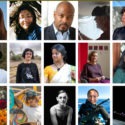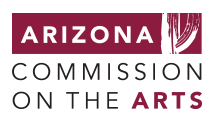Welcome to the fourth installment of Inside the App, a five-part series designed to walk prospective applicants through the Artist Research and Development Grant application and outline some general principles of effective grant writing for artists.
Over the course of five installments, Inside the App will guide you through the application, one section at a time. Along the way, we’ll provide insights from experts and past ARDG recipients. Follow along, draft your own application as you go, and by the end of this series you’ll be ready to submit a truly competitive application.
Artist Statement
Your artist statement should reinforce and build upon the other components of your application, while framing your work in a larger context. While the narrative portion of your application should be narrowly focused on the project you are proposing, your artist statement allows you to pull back and discuss your work, your approach, and your philosophy more generally.
The ideal format and what information you choose to include are largely dependent on the story you want to tell about yourself and your work. If you’re not sure where to begin, try answering the following questions. For an additional challenge, limit your answers to each question to fifty words or less:
- What motivates you as an artist?
- What themes are you most interested in exploring through your work and what is it about these themes that interests you?
- What makes your work vital and unique?
- How does your work reflect or respond to your community (or community of practice)?
The application allows for a generous 2,500 character limit, and we encourage you to take advantage of the space you have to work with. Still, a simple, less-is-more approach is usually best. As in the narrative portion of the application, stick to clear, concise statements. Favor the simple and concrete over the ponderous and nebulous. Avoid empty clichés and grandiose statements. Instead, focus on specific details that provide genuine insight into your process and the reasoning behind it.
Artist Bio
Let’s begin with what an artist biography is not.
The artist bio is not a resume. Your artist bio should provide a brief survey of your artistic practice and experience, featuring only the most significant and relevant events, accomplishments, and recognitions.
The artist bio is not a memoir. Focus on your practice and experience, and employ a just-the-facts approach. Consider the difference between the following statements:
- A: Following the disappearance of my dog, Pepperpot, I descended into a bottomless ennui and lost all desire to pick up my paint brush. Thank heavens the ankle of my soul was grasped mid-plummet by the man who would become my mentor in art and in life; known by most as Thomas Kincade, to me he will always be “Poppa Tommy.”
- B: From 1996 to 1998 I studied with Thomas Kincade.
The artist bio is not an artist statement. Again, a just-the-facts approach is advised. If mentioned at all, your artistic philosophy, the development of your aesthetic, and the themes of your work, should be defined briefly and with minimal elaboration.
The Artist Bio submitted by 2015 Artist Research & Development Grant recipient David Adams opens with the following sentence:
David Emitt Adams is an artist whose current practice engages historical media in order to create an informed contemporary dialogue about photography’s past and present.
The nature of his work, the themes he explores, and the techniques he uses are summarized briefly, but clearly, in a single sentence. Adams then proceeds to document his education, degrees earned, and major recognitions and exhibitions of his work.
And what if you don’t have a long list of accomplishments, recognitions, and exhibitions? A long history and illustrious history of artistic work is not a requirement for this grant. Though the application allows for 2,000 characters, you should not feel obligated to pad your bio with items that are less than relevant or of exaggerated importance.
Remember that all components of the application are working together to address the evaluation criteria: Impact, Feasibility, and Artistic Strength. If you have enjoyed a long career and great success as an artist, your Artist Bio might testify to the feasibility of your proposal or the artistic strength of your work in general. On the other hand, if you are just beginning your journey and have little experience to report, this does not mean that your proposal is unfeasible or that work is weak. It simply means that the other components of your application will have to work a bit harder in these areas.
Your assignment this week:
Write the first drafts of your Artist Statement and Artist Bio.
Draft your responses to questions (a) and (b) under “Strategic Plan” in the “Grant Proposal” section of the grant guidelines.
Have a friend review the latest draft of your responses to questions (a), (b), (c), and (d) in the “Proposal Narrative” section of the application.
Related


34 Arizona Artists Awarded Research & Development Grants
Awarded through a competitive application and review process, these $5,000 grants support Arizona artists as they work to advance their artistic practice, expand their creative horizons, and deepen the impact of their work.
Read more
30 Arizona artists awarded Research & Development Grants
The Arizona Commission on the Arts awards 2022 Research & Development (R&D) Grants to 30 Arizona artists to advance their artistic practice, expand their creative horizons, and deepen the impact of their work.
Read more
Arizona Commission on the Arts and Arizona Community Foundation Announce Partnership, Additional Investments in Arizona Artists
On September 18, 2018, The Arizona Community Foundation (ACF) and the Arizona Commission on the Arts announced a joint effort to support Arizona artists, including additional funding from the recently established Newton and Betty Rosenzweig Fund for the Arts, an endowment held at ACF.
Read more
Perspectives: Danielle Foushée
Perspectives is an on ongoing series of interviews and check-ins with recipients of our Artist Research and Development Grant (ARDG). Recently, we spoke with Phoenix-based public artist Danielle Foushée about "Invitation," a piece installed at the entrance to Tempe Beach Park in October 2017.
Read more








